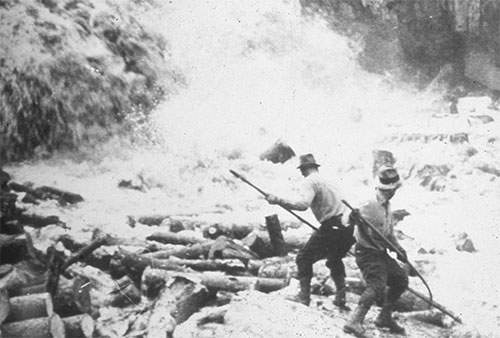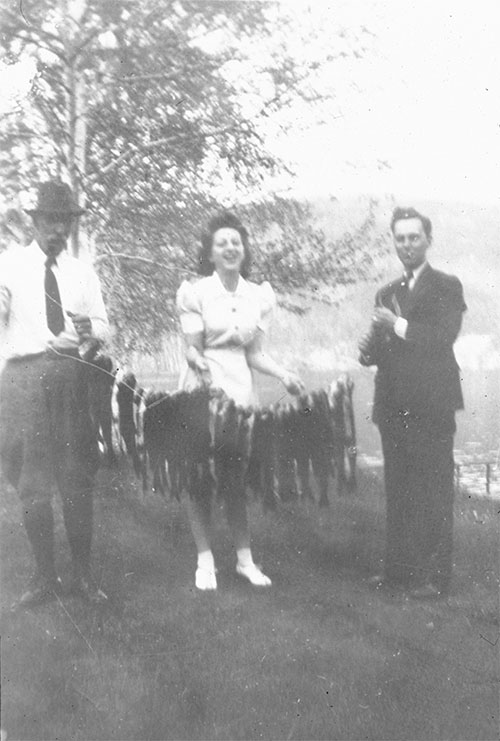
Historical influences on the territory
La Mauricie National Park

Forestry operations
In the early nineteenth century, the forestry industry began heavily altering the water systems to facilitate the transport of wood toward key rivers, such as the Matawin and Saint-Maurice Rivers. When the National Park was created in 1970, the water levels of some sixty lakes, wetlands, and waterways were still high due to the splash dams. These dams allowed wood that was cut in the winter to be carried away with the spring run-off. The ecological impacts from that time are still felt almost 150 years later. The artificially increased water levels notably caused accelerated erosion along the shorelines and altered the transition zone between the terrestrial and lacustrine environments. What’s more, logs that washed up on shore contributed to sediment accumulation, which in turn caused the deterioration of shoreline habitats, vital reproduction and rearing grounds for brook trout.

Wildlife harvesting
An increase in wildlife harvesting, caused by the arrival of hunting and fishing clubs in 1883, compromised the ecological integrity of La Mauricie National Park’s lakes. Several factors led to the disruption of the existing aquatic communities, including the use of baitfish and the introduction of non-native species to diversify the fishing experience. Since the end of the last ice age, a hundred or so of the territory’s 150 lakes were home to a single species of fish: the brook trout.
These exotic species compete with or prey on the brook trout, monopolizing a very large portion of the brook trout’s food sources and occupying their rearing grounds. Since the nineteenth century, brook trout numbers have dropped by 50% compared to historical values. The disruptions brought about by the introduction of these new species, coupled with the deterioration of the aquatic habitats caused by logging, have endangered or even hastened the extinction of dozens of allopatric brook trout populations.
- Date modified :